The average person spends about 26 years of their life sleeping—that’s nearly a third of your life!
Given just how much time we all spend curled up in bed, it makes sense to want nothing but the absolute best fabric for bedsheets. After all, slipping between soft, breathable sheets at the end of a long day can make all the difference between tossing and turning or sleeping like royalty. Whether you’re upgrading your linens or choosing a housewarming gift, knowing what are the best sheets out there can help you create a cozy, sleep-friendly bedroom.
Why Fabric Matters for Bedsheets
Not all sheets are created equal. Some trap heat and feel stiff, while others are silky, cool, and breathable. The best material for bed sheets can dramatically affect your comfort, skin health, and the overall sleep quality. The fabric also influences how your sheets wash and wear over time—nobody wants scratchy or pilling sheets after just a few washes!
So, let’s dive into the types of sheets you’ll want to know about before choosing your next set.
1. Cotton – Tried, Tested, and Trusted

Cotton is a timeless champion in the bedsheet world and for good reason. Not only is it soft and breathable, but it’s also durable and easy to care for. Among cotton options, you’ll mostly find regular cotton, Egyptian cotton, and Pima cotton.
- Regular cotton: Affordable and common, but may not last as long.
- Egyptian cotton: Known for its ultra-long fibers, this type delivers a silky feel and exceptional strength. It’s premium – and often pricey – but lasts for years.
- Pima cotton: Similar to Egyptian but typically sourced from the U.S. It’s soft, breathable, and less likely to pill.
Looking for the best king size bed sheets? Egyptian cotton is widely considered a top-tier choice for those wanting top-notch luxury at home.
Pros of Cotton Sheets
- Highly breathable – great for hot sleepers
- Softens after each wash
- Durable and long-lasting
Cons of Cotton Sheets
- Wrinkle easily (unless treated)
- Higher quality types can be expensive
2. Linen – For Hot Sleepers and Luxury Lovers
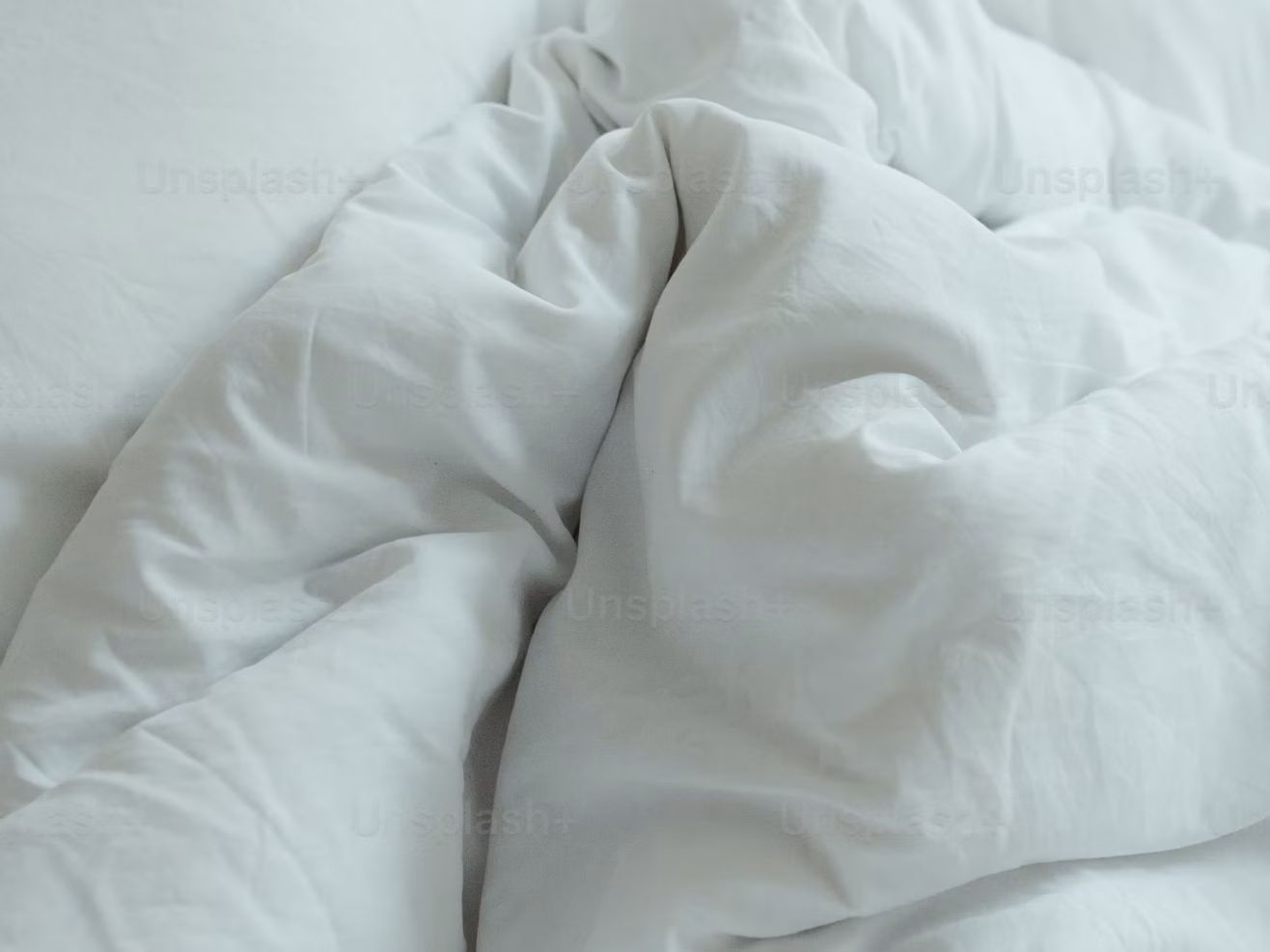
Linen sheets are made from flax fibers and are wildly popular among those who sleep hot. They have a naturally coarse texture at first but soften significantly with each wash. Many users say linen gets better with age—like a fine wine!
What Makes Linen One of the Best Materials for Bed Sheets?
- It’s incredibly breathable and moisture-wicking, making it ideal for warm climates or sweaty sleepers.
- Linen sheets offer a casually elegant look that couples softness with personality.
Pros of Linen
- Cools naturally, making it great for all seasons
- Lives a long life – can last decades with care
- Gains softness over time
Cons of Linen
- More expensive upfront
- Wrinkles easily (but some say that’s part of the charm)
- Coarse texture initially, which may not please everyone
3. Bamboo – Sustainable and Super Soft
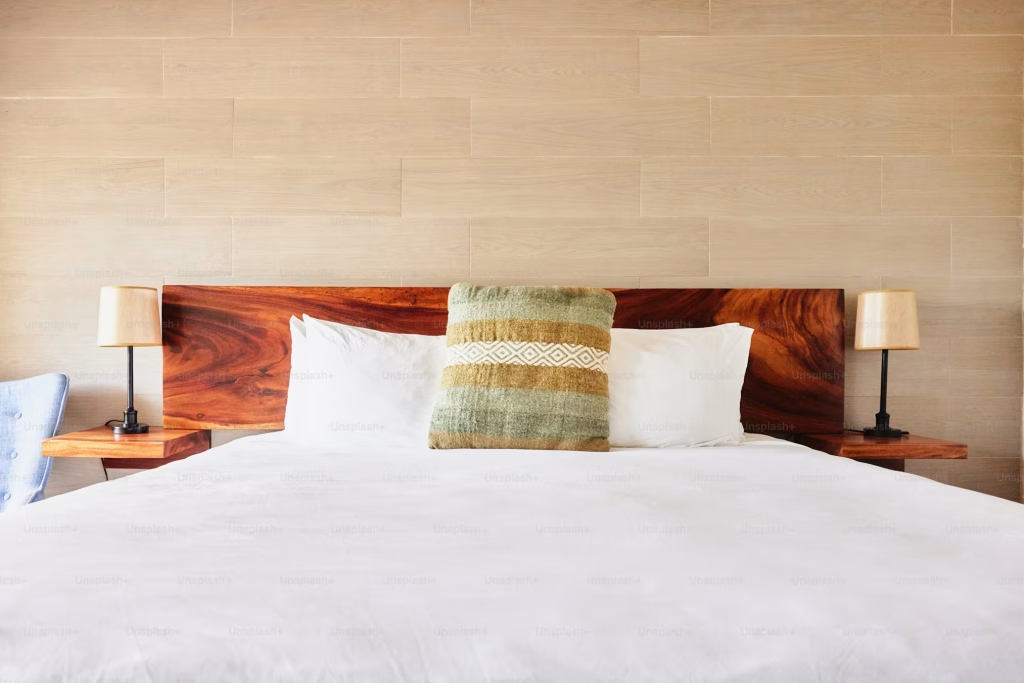
Bamboo sheets, often labeled as “bamboo rayon” or “viscose from bamboo,” come from bamboo pulp that’s been processed into fibers. These sheets are since growing in popularity thanks to their eco-friendliness and silky softness.
Terminology alert: Rayon is a textile made from regenerated cellulose fiber, often derived from plants like bamboo.
Top Reasons to Go Bamboo
- Incredibly soft—often compared to silk
- Hypoallergenic, so great for sensitive skin
- Eco-friendly choice for green households
Things to Consider
- Can be pricier than cotton
- Quality varies dramatically between brands
- May require special laundering
4. Tencel (Lyocell) – Modern, Smooth, and Eco-Conscious
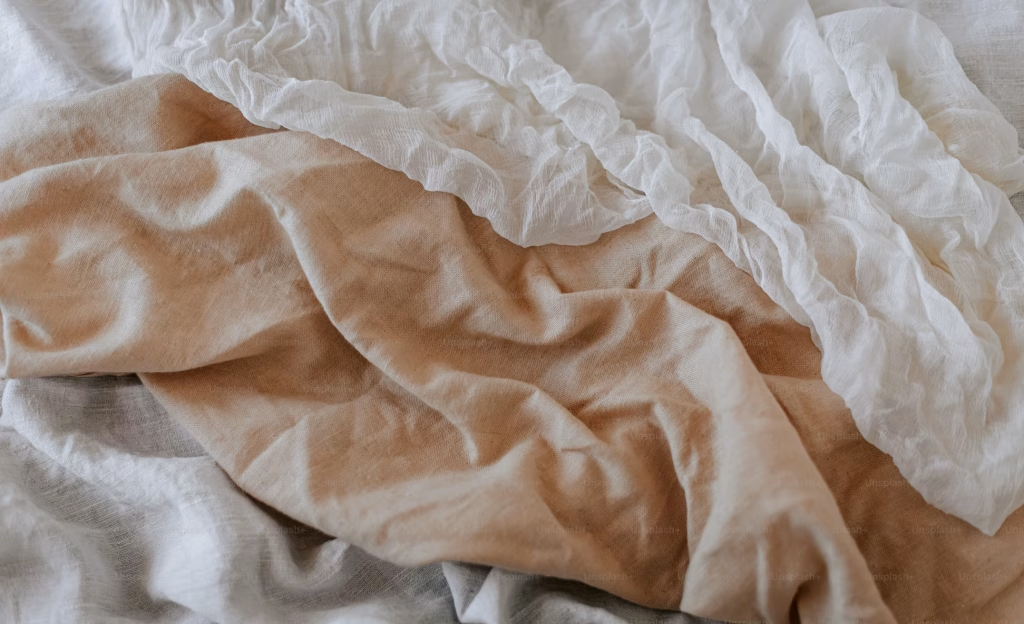
Tencel is made from sustainably harvested wood pulp, usually from eucalyptus trees. It’s manufactured in an eco-friendly closed-loop process, making it a big win for earth lovers.
Terminology note: “Lyocell” is the generic name for this type of fabric, with Tencel being the most recognized brand.
Why It’s Among the Best Type of Sheets
- Exceptionally smooth and cool to the touch
- Naturally moisture-wicking
- Less prone to wrinkles than cotton or linen
What to Watch Out For
- Can be more expensive than traditional cotton
- May show water spots when not dried carefully
5. Percale Cotton – Crisp and Cool
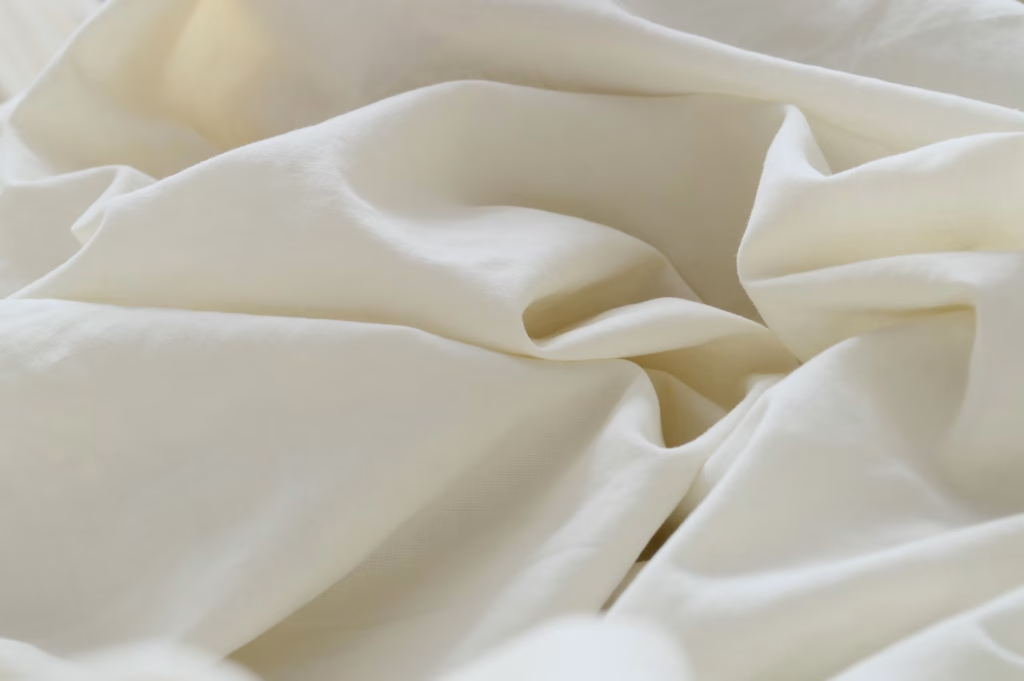
Percale isn’t a fabric, but a weave style. When cotton is woven in a one-over-one-under fashion, it produces that cool, crisp hotel-bed feel—ideal for hot sleepers or anyone who loves a lightweight finish.
Why Choose Percale Over Regular Sheets?
- Crisp and cool feel, perfect for summer
- Highly breathable
- Durable and gets better with each wash
Drawbacks
- May wrinkle more than other weaves
- Not as soft as sateen or bamboo right out of the box
6. Sateen – Smooth & Lustrous
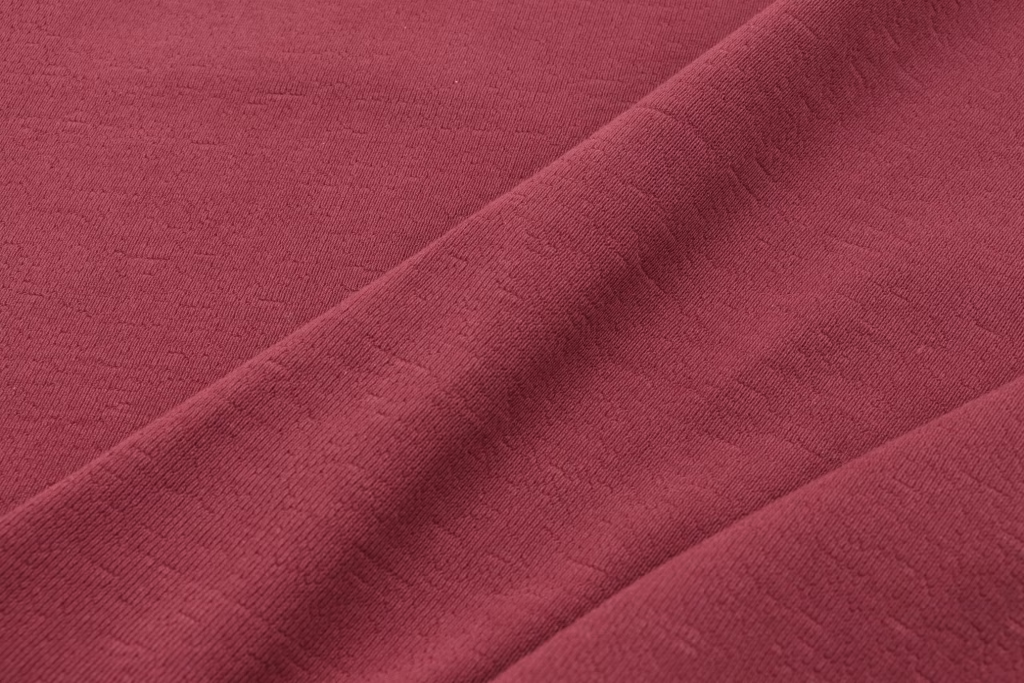
Sateen is another weave style, but unlike percale, it uses a one-under and three-over pattern. This gives the sheets a shiny surface finish and an ultra-soft feel, though they tend to be heavier and a bit warmer.
What Makes Sateen a Popular Option for the Best Fabric for Bedsheets?
- Luxury feel with a subtle sheen
- Perfect for cooler climates or winter months
- Naturally wrinkle-resistant
Potential Downsides
- Can trap heat—less ideal for hot sleepers
- Prone to pilling over time
7. Blends – Best of Both Worlds?
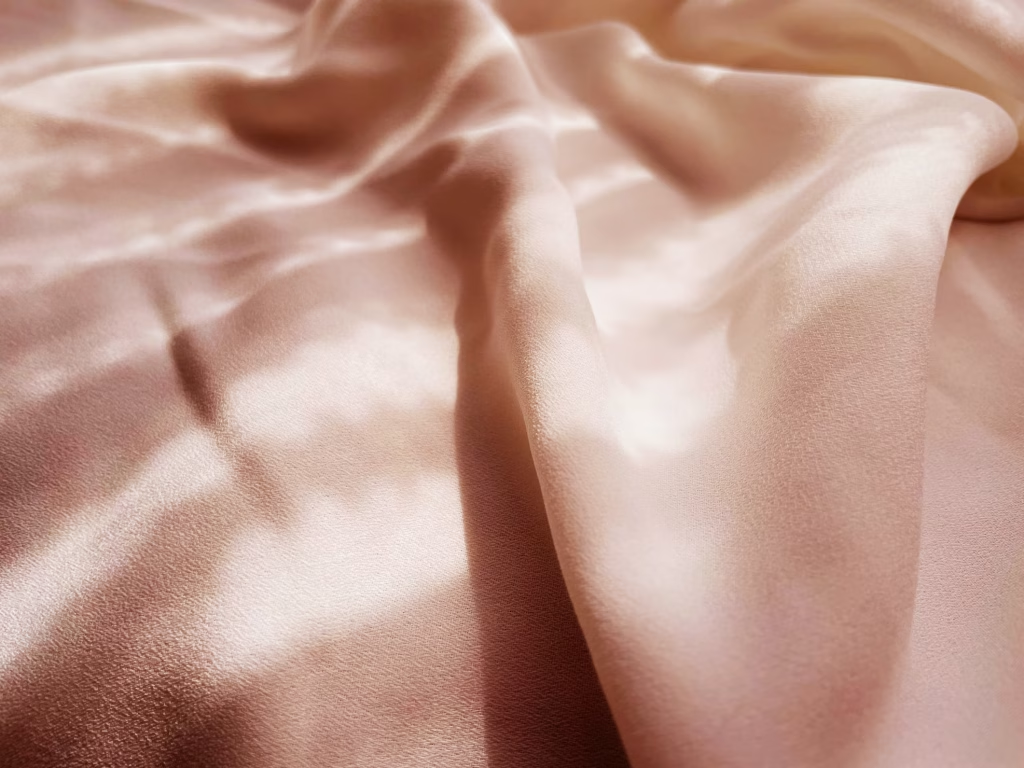
Blended sheets combine two or more types of fibers, like cotton-polyester or bamboo-cotton, to balance performance, feel, and price. These are widely available and often offer the best bang for your buck.
But here’s the catch—while blends are practical and budget-friendly, they might not provide the same softness or breathability as 100% natural fibers. If you’re shopping for the best king size bed sheets that are easy to care for, blends can be a smart pick—just be sure to feel the product first if possible.
Pros of Blends
- Affordable and accessible
- Wrinkle-resistant and easy to maintain
- Often more durable due to synthetic fibers
Cons of Blends
- Less breathable
- May not be as soft or luxurious
How to Choose the Best Fabric for Bedsheets
Choosing the best fabric for bedsheets depends on personal preferences. Ask yourself:
- Do you sleep hot or cold? – Go for linen or percale if you run warm. Try sateen or flannel for warmth.
- Are you big on sustainability? – Tencel or organic cotton are good choices for conscious consumers.
- Do you crave softness above all? – Bamboo or sateen may win you over with their silky smoothness.
- How much time do you want to spend on care? – Blends or wrinkle-resistant sheets will save you effort.
Care Tips to Make Your Sheets Last Longer
Once you’ve picked your perfect set, take care of them properly to make it worth your money:
- Wash in cold or lukewarm water with a gentle detergent
- Avoid bleach or heavy fabric softener—they can break down fibers
- Air-dry or tumble dry on low setting
- Rotate your sheet sets regularly to extend life
Final Thoughts: Sleep Better, Choose Smarter
The bottom line? There’s no single “best” when it comes to sheets—what matters most is how a sheet feels against your skin, whether it meets your sleep needs, and how easy it is to maintain. The best material for bed sheets can range from crisp cotton to dreamy bamboo, depending on your lifestyle, climate, and budget.
So whether you’re on the hunt for the best type of sheets to feel like you’re sleeping in a five-star hotel, or simply upgrading your old standby, let this guide be your roadmap. After all, a better night’s sleep starts with better sheets.
Ready to Upgrade Your Sleep Game?
Now that you’re armed with knowledge on the best fabric for bedsheets, it’s time to treat yourself to a better bedtime. Why settle for less when you could be sleeping in softness, every single night?










